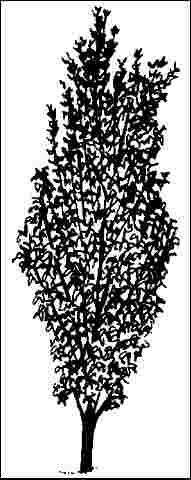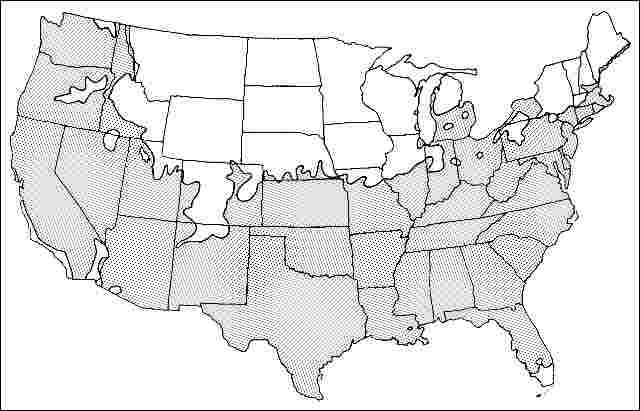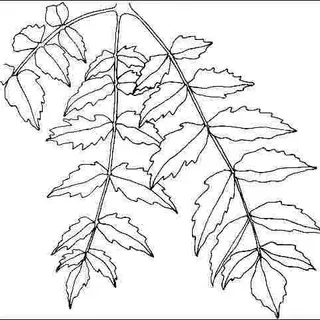Koelreuteria paniculata 'Fastigiata': 'Fastigiata' Goldenrain Tree
Introduction
This cultivar of goldenrain tree grows 30 feet tall with a four- to six-foot spread. Although the species has a reputation for being weak wooded, this selection may stay together due to the tight, compact growth habit. It is rarely attacked by pests and grows in a wide range of soils, including high pH soils. Goldenrain tree tolerates dryness and casts little shade because of the narrow growth habit. It would make a good tree particularly where overhead or soil space is limited, due to its narrow crown and adaptive abilities. The tree grows moderately and bears few flowers. It is not as showy as Koelreuteria bipinnata but is much more cold-tolerant. However, it is less cold tolerant than the species. The species Koelreuteria elegans can become invasive, but this cultivar has not been assessed. Nonetheless, it is best to use it with caution.

General Information
Scientific name: Koelreuteria paniculata
Pronunciation: kole-roo-TEER-ee-uh pan-ick-yoo-LAY-tuh
Common name(s): 'Fastigiata' goldenrain tree
Family: Sapindaceae
USDA hardiness zones: 5B through 9B (Figure 2)
Origin: not native to North America
Invasive potential: not assessed/incomplete assessment
Uses: street without sidewalk; specimen; sidewalk cutout (tree pit); tree lawn 3–4 feet wide; tree lawn 4–6 feet wide; tree lawn > 6 ft wide; urban tolerant; highway median

Description
Height: 20 to 30 feet
Spread: 4 to 7 feet
Crown uniformity: symmetrical
Crown shape: columnar, upright/erect
Crown density: moderate
Growth rate: moderate
Texture: coarse
Foliage
Leaf arrangement: alternate (Figure 3)
Leaf type: even-pinnately compound, odd-pinnately compound
Leaf margin: lobed, incised, serrate
Leaf shape: ovate, oblong
Leaf venation: pinnate
Leaf type and persistence: deciduous
Leaf blade length: less than 2 inches, 2 to 4 inches
Leaf color: green
Fall color: yellow
Fall characteristic: showy

Flower
Flower color: yellow
Flower characteristics: very showy
Fruit
Fruit shape: oval, elongated
Fruit length: 1 to 3 inches
Fruit covering: dry or hard
Fruit color: green, brown
Fruit characteristics: does not attract wildlife; showy; fruit/leaves not a litter problem
Trunk and Branches
Trunk/bark/branches: branches don't droop; not showy; typically one trunk; thorns
Pruning requirement: needed for strong structure
Breakage: resistant
Current year twig color: brown
Current year twig thickness: thick
Wood specific gravity: unknown
Culture
Light requirement: full sun
Soil tolerances: sand; loam; clay; acidic; alkaline; well-drained; extended flooding
Drought tolerance: high
Aerosol salt tolerance: moderate
Other
Roots: not a problem
Winter interest: no
Outstanding tree: yes
Ozone sensitivity: unknown
Verticillium wilt susceptibility: susceptible
Pest resistance: resistant to pests/diseases
Use and Management
The root system is coarse with only a few but large roots, so transplant when young or from containers. Do not transplant in the fall as success rate is reportedly limited. Considered a city tolerant tree due to tolerance to air pollution and ability to withstand drought, heat and alkaline soils. It also tolerates some salt spray but requires well-drained soil.
Pests
Occasional attacks by scale may be seen. Sprays of horticultural oil help control overwinter stages. Boxelder bug can be a menace.
Diseases
Koelreuteria is subject to few diseases. A canker causes dead and sunken areas on the bark. Coral pink fruiting bodies develop on the diseased bark. Prune out infected branches and fertilize to maintain tree health.
Verticillium wilt attacks Koelreuteria. The disease causes wilting and death of leaves on infected branches. Eventually the entire tree may be killed. Fertilize to stimulate growth. There are no chemical controls.



